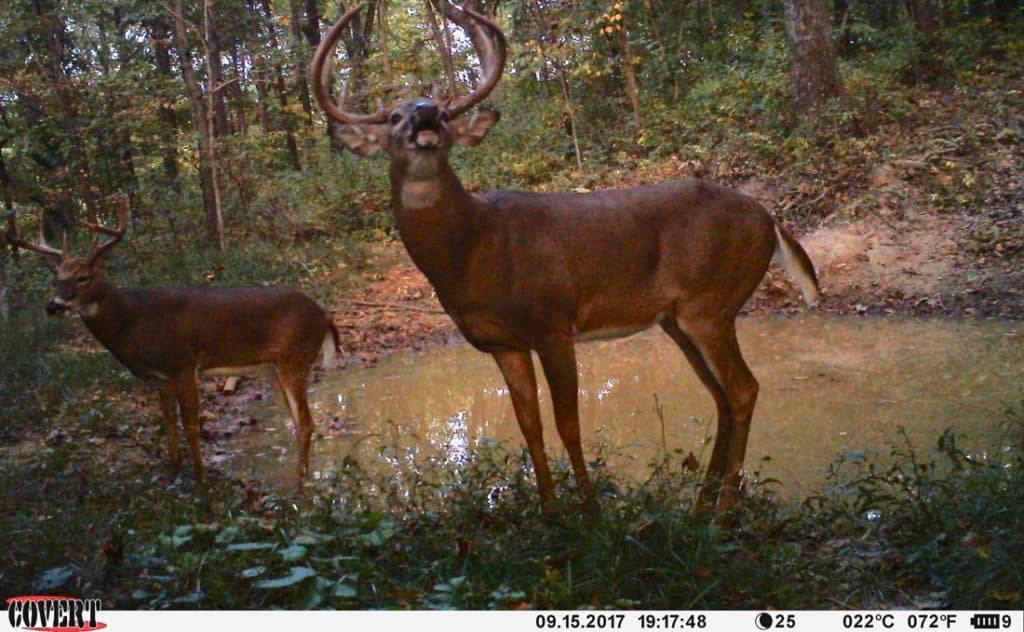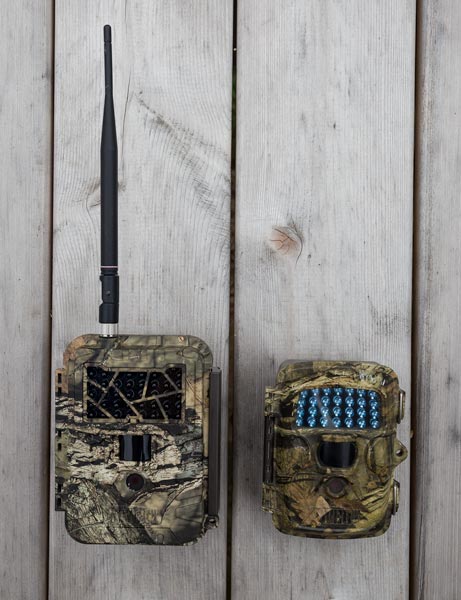Trail Camera Improvements Make Keeping Tabs on a Deer in its Core Range Possible
Trail cameras have been making remote game scouting possible for decades, but advances in cellular trail cameras have recently allowed us to be much more effective in keeping track of deer without them being aware of our presence.

Scouting with modern cellular trail cameras has made it possible to keep tabs on bucks in their core areas.
Back in the early 2000’s, when affordable trail cameras became widely available, hunters embraced the new technology and benefitted from the information they could gather. Scouting with trail cameras helped gather information on deer whereabouts 24/7. A problem with trail cameras can be the need for having to physically visit the camera to check the pictures. This means that most of the time you shouldn’t place a camera in the deer’s core area, especially their bedroom, because they’ll detect your presence. They’ll either see or hear you, or smell the scent you left behind. That defeats the purpose of using a trail camera as a non-invasive method of gathering information on deer whereabouts. I ruined a number of slam dunk hunting setups before I learned this lesson.
To effectively use these “regular” style trail cameras, you should place them in a spot where, with the proper wind, you could approach quietly and undetected. Food sources a good distance from deer bedding areas are good choices. If you do put a trail camera like this in an intrusive location, it should be checked sparingly and ideally right before or during a rainstorm.
“The number one problem with using trail cameras is that we get detected when approaching the camera to collect the SD card or to change batteries.”
We tip off the deer in this way and make them wary of our presence, so they change their patterns or location, ruining our chance of ever catching sight of them when it comes time to hunt.

Standard SD card trail cameras (right) are still a valuable scouting tool, but advanced cell technology (Covert Black Ops camera on the left) is taking trail camera advantages to a new level.
Cellular Trail Cameras Send Pictures and Video Instantly!
The latest technology in trail cameras uses cell phone networks to instantly send images, even short videos, by text or email without us ever having to physically visit the trail camera. Put the camera in place in spring, and, as long as the batteries hold out (think solar!), the camera will send images until we pull it after the hunting season.
Daisy-Chaining Multiple Trail Cameras Together
Another recent innovation is having a network of a dozen or more cameras wirelessly linked together to a “home” camera. This home/base camera should be placed in a spot that is easily accessible and will not spook game when you check it. Those other cameras can be in those remote, sweet spots because you get all the images from them on the one base camera. One screen sees all. So, as long as the camera batteries hold out, and they should typically last six months or more (if you’re not on a bait pile), you never have to get close to any of the cameras other than the home camera. You can now place cameras in spots you wish to hunt and not tip the deer off to your presence. When you have daylight activity at a certain camera you can go in to hunt an active deer in daylight. What more can you ask for?
Of course, the new technology is pricey compared to the old school stuff without those features, but we can expect them to become more affordable in the near future. Expect to pay around $350-$400 each for good cellular trail cameras. This new technology is a great step forward and will reduce the amount of boot leather we’ll need to expend.
